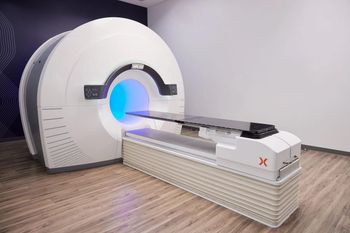
Nonionic contrast media prove safe in pediatric patients
Low-osmolar nonionic contrast agents pose a minimal safety risk to pediatric patients, according to a large retrospective study published in the June issue of the American Journal of Roentgenology.
Low-osmolar nonionic contrast agents pose a minimal safety risk to pediatric patients, according to a large retrospective study published in the June issue of the American Journal of Roentgenology.
Recent reports of adverse effects from contrast agents have caused concern among radiologists, despite a long-standing majority view that nonionic contrast agents for x-ray-based indications pose minimal risk. A sharp increase in the number of pediatric imaging exams using contrast media since the late 1990s required putting fresh data before presumptions, according to coauthor Dr. Richard H. Cohan, a professor of radiology at the University of Michigan.
"While we have long assumed that newer nonionic contrast agents are safe, this study reaffirms their safety and better determines what the risks actually are in children," he said.
Cohan and colleagues investigated the incidence of allergic-like reactions caused by low-osmolar nonionic contrast material in pediatric patients from January 1999 through September 2004. They evaluated data from 11,306 children who received intravenous injections of iohexol (Omnipaque) or iopromide (Ultravist) mostly for CT (>99%) and a small number of excretory urography exams.
The investigators found that severe acute allergic reactions related to contrast agents are rare. Fewer than 2% of the patients in the study group reported acute allergic-like reactions to contrast material. These reactions were classified as mild, moderate, and severe and appeared in 16, one, and three patients, respectively. Six of the affected patients had a history of allergic reactions, including two with previous reactions to iodinated contrast agents. No deaths were attributed to intravenous low-osmolar nonionic contrast.
Over the last 20 years, radiologists have moved from ionic to iso- and low-osmolar nonionic iodine contrast agents for CT and intravenous pyelogram exams. These contrast media have been studied extensively in adults but infrequently with children. Study findings could help physicians identify factors that could trigger adverse reactions in this particular patient population, the researchers said. They also recommended prophylactic medication in these patients before the imaging procedure to reduce the risk of acute allergic-like reactions.
The researchers also found a statistically significant difference in the rate of adverse reactions for children and that for adult patients at their institution. These findings validate previous studies showing lower rates of adverse reaction in pediatric and elderly patients compared with adults.
"Our study confirms that doctors and parents alike can feel comfortable administering these agents to children," Cohan said.
For more information from the Diagnostic Imaging archives:
Newsletter
Stay at the forefront of radiology with the Diagnostic Imaging newsletter, delivering the latest news, clinical insights, and imaging advancements for today’s radiologists.




























